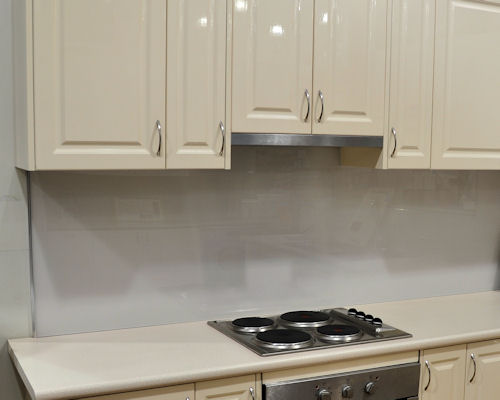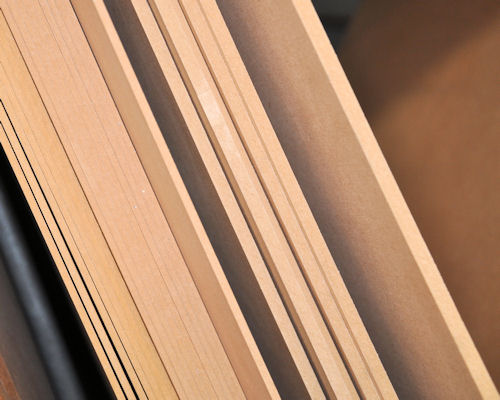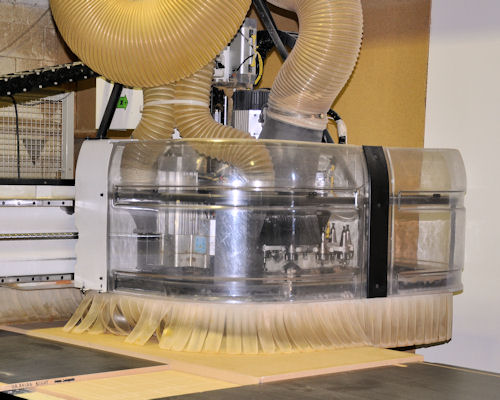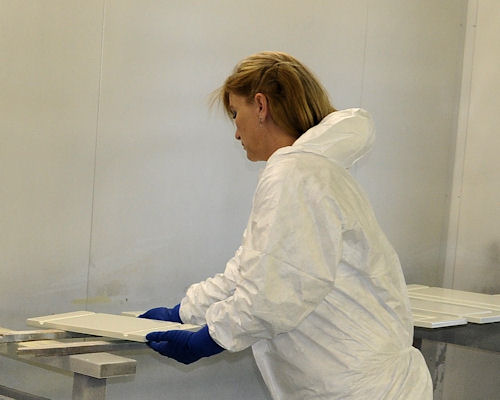Medium density fibreboard
 Audio for slide 1 (mp3 |6|KB)
Audio for slide 1 (mp3 |6|KB)
Medium density fibreboard, or MDF, is manufactured in a similar way to particleboard, using the same sorts of glues and additives.
The big difference is in the way the wood fibres are treated before they're pressed.
The wood is heated under pressure until the fibres and natural glues that bond them together soften, and then the fibres are rubbed apart to produce a much finer material for pressing.

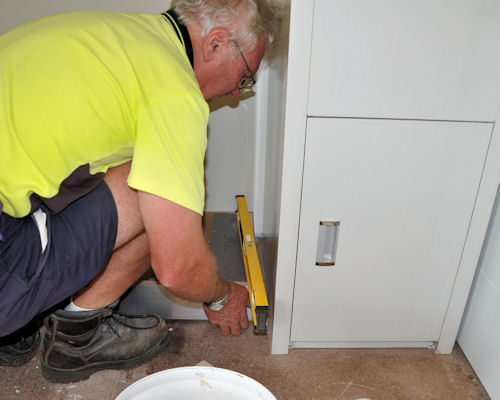 Audio for slide 6 (mp3 |6|KB)
Audio for slide 6 (mp3 |6|KB)
Disadvantages
Like particleboard, MDF does not tolerate wet conditions.
Moisture-resistant boards are able to cope with areas of high humidity and occasional wetting, but they still need to be protected from prolonged contact with moisture.
MDF will also swell and shrink in response to changes in humidity.
In locations where dimensions are critical, MDF should be acclimatised for up to 48 hours prior to use to make sure that its moisture content is in balance with the surrounding atmosphere.


Learning activity
Audio 7 (mp3 |6|KB)Have you heard the term 'acclimatise' before?
It's the process of bringing the board's moisture content in line with the surrounding atmosphere - or 'climate' - by letting the board naturally take up or give off moisture into the air over a period of time.
How would you do this if you had several large sheets?
That is, how would you stack the sheets to ensure that the air could circulate around all surfaces?
Write down your answer and share it with your trainer and other learners in your group.
If you have examples in your own workplace of methods used to acclimatise board products, take some digital photos to include with your answer.



